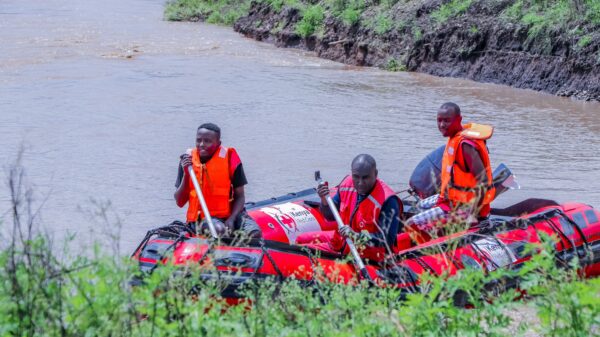The COVID-19 pandemic has seen a surge in the number of patients with acute respiratory distress syndrome (ARDS) in intensive care units across the country. While most of them have recovered, some have, unfortunately, ended in a fatality.
The cases of infections currently average about 10% of tested samples. Our resilience is being stretched to the limit; bed spaces are diminishing, caregivers are contracting the virus and hospitals are at risk of being overwhelmed. We are tragically unprepared for the deluge of patients with a virus we still cannot cure, even as the curve continues upwards.
According to the World Health Organization (WHO), some 15% of Covid-19 patients see rapid lung failure and require help with breathing. Some may appear with no evident respiratory distress but are found to have dangerously low oxygen levels – a condition called silent hypoxia. A fraction of critically ill patients requires a ventilator.
Although there have been sustained efforts by the counties and the national government to increase isolation beds which now stand at over 11,000 against the targeted 30,500. Kenyatta National Hospital has increased ICU bed capacity from 30 to 80 , which is a commendable move.
But it is important to note that the crisis requires more than just sleeping spaces. They must be well equipped to manage the high number of patients that may develop breathing problems and other complications. They must have staff well trained in critical care and handling of the equipment. On this, we are naked. Currently, there are 447 ICU beds and 447 ventilators in the country. By mid-July, the total number of infections recorded stood at over 10,000.
In a break down of the numbers by the Council of Governors (COG) Vihiga, Elegeyo Marakwet, Turkana and Tana River counties do not have a single ICU or a ventilator. Makueni, Kilifi, Turkana, Isiolo, Wajir, Busia, Bomet, Laikipia, Uasin Gishu and Garissa, which have fewer than 10 ICU beds in their wards. Machakos, Kajiado, Kisii, Nakuru, Nyandarau, Trans Nzoia and Kiambu have just about 15 beds in ICU wards.
One of the defining parameters of whether a patient needs to be hospitalized or should only be isolated at a COVID-19 care centre is the oxygen saturation levels in her or his blood. Oxygen saturation is the measure of the blood’s ability to carry oxygen. If it falls below a certain level for prolonged periods, there are risks of organ damage, sometimes irreversibly.
WHO estimates that one person in six of those affected by the virus becomes seriously ill. In these severe cases, the virus causes damage to the lungs, causing the body’s oxygen levels to drop and making it harder to breathe.
Artificial oxygen can be introduced into the body through a nasal cannula or via a face mask and the patient then uses the oxygen to breathe by his or herself. And when the case is severe, a ventilator is deployed. Ventilators provide mechanical ventilation by moving breathable air into and out of the lungs to deliver breaths to a patient who is physically unable to breathe, or breathing insufficiently. The devices are chiefly used in intensive care and emergency medicine It also has a humidifier, which adds heat and moisture to the air supply so it matches the patient’s body temperature.
Local public Universities and industries have fabricated some ventilators but the slow pace of manufacturing and uptake is worrying. The pandemic is fast spreading to small towns and villages with creaky public health infrastructure, lack of enough high-flow piped oxygen supplies and ventilators. We have always turned to imports when our capacity to produce do not meet demand. Unfortunately in the case of ventilators, even the countries which previously had a surplus to export are themselves facing shortages.
Making sure Kenya has enough beds with access to high-flow oxygen and ventilators will be the biggest challenge in the weeks and months ahead as the pandemic inevitably spreads to the heartland. Pushing oxygen into smaller towns and villages will be a challenge.
By Dr Steve Adudans, the executive director, Centre for Public Health and Development. Twitter: @SteveAdudans























































